/ES REPORTAGE
The Dirty Business of Green Energy in Congo
On the eve of a small town’s mining boom, New Lines investigates the disconnect among companies, the government and the community that sits on the mineral-rich land
Listen to this story
It’s 9 on Monday night in Manono,
a small town in the Tanganyika province in the Democratic Republic of the Congo (DRC). Today in the once-thriving city, the streets are dotted with the remnants of industrial mining equipment after the region’s tin boom collapsed decades ago. A modest brick cathedral sits alongside banana leaf-thatched homes, and tonight schoolchildren run through the darkness. Motorbike headlights create a theater of shadows on the rows of palm and mango trees while business is being done.
Just off the main street, the clients in one of the town’s barbershops are animated, talking about lithium — a metal crucial for making electric car batteries, known around Manono as the new “white gold” because of its silvery color and market value. As the world transitions to electric vehicles, lithium is in high demand: By 2050, the projected U.S. demand alone would be three times global production today, according to the International Energy Association (IEA). In recent years Manono has gained a reputation among miners, geologists and investors for having one of the world’s biggest hard rock lithium deposits, which is as yet untapped. Waiting their turn in the barber’s chair, the men talk about the prospects of a new industrial lithium mine in town — one that has already started to displace them from the spots where they dig by hand for other ores as artisanal miners.
“Manono should not be a city without jobs,” one of them says. Yet despite rumors circulating around town of the thousands of new jobs the mine could create, only a few have yet to materialize, and the men are concerned.
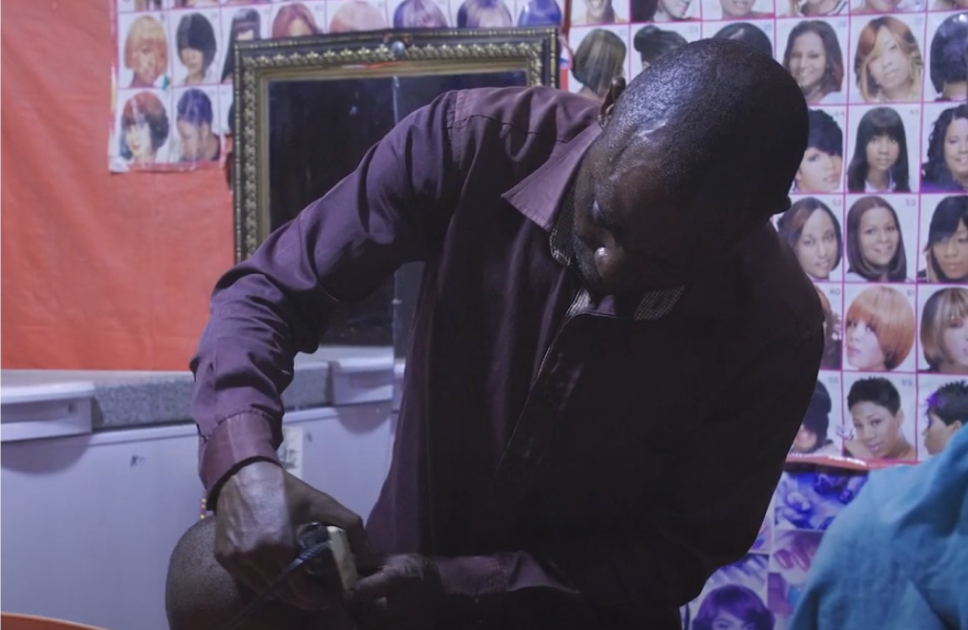
While global demand for lithium has been growing at the fastest pace among all of the world’s major minerals,
according to the IEA, a monthslong New Lines investigation has revealed a deep disconnect between the bright electric future publicized by some mining companies and the reality of life in a town that supplies the metals that this new future relies upon.
As the world rushes to find alternatives to fossil fuels, the International Labour Organization has called for a “just transition,” that is, greening the economy in a way that is “as fair and inclusive as possible to everyone concerned, creating decent work opportunities and leaving no one behind.”
New Lines went to Manono to assess what measures have been put in place to make sure that the town experiences a just and green transition in practice — not only on the websites and in the brochures of mining companies selling themselves to investors and shareholders.
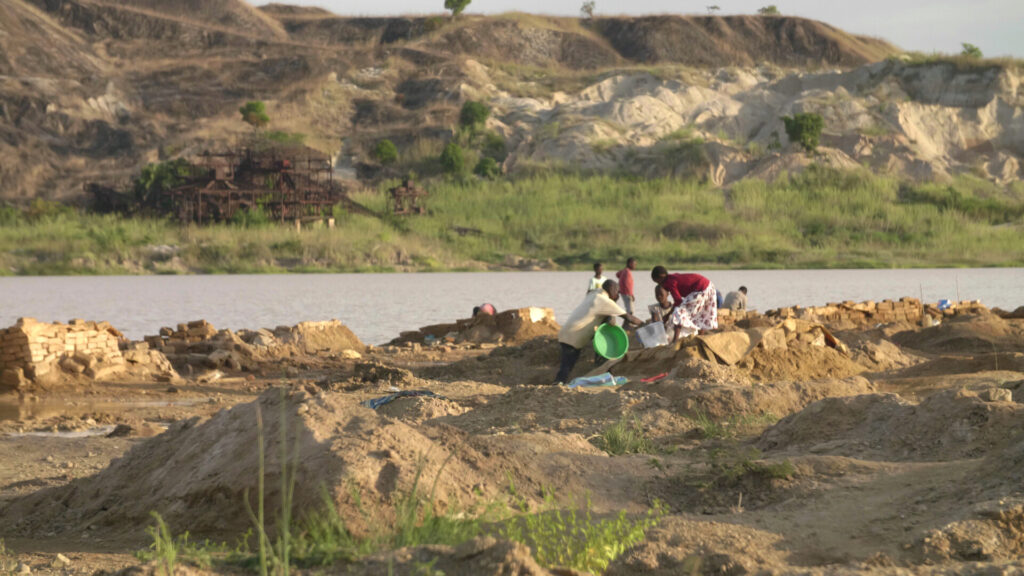
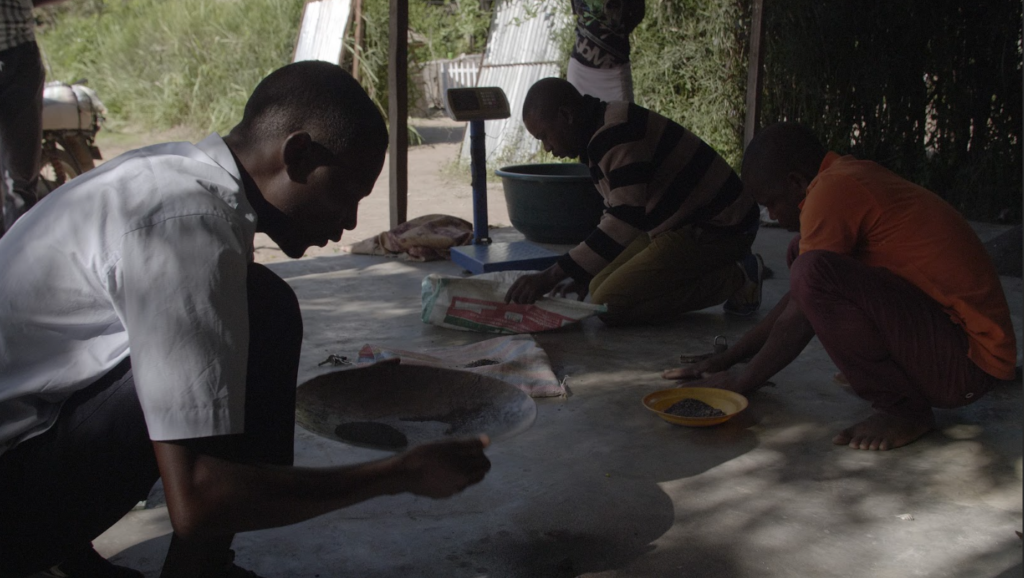
There are two main joint ventures racing to be the first to get the lithium out of the ground at Manono.
These joint ventures (groups of companies working together) include two publicly traded mining companies — AVZ Minerals Ltd., based in Australia, and Tantalex Lithium Resources, which is traded on Canadian, U.S. and German stock exchanges. New Lines found that these joint ventures had left most of the community at the start line of the race. We found that critical, legally required documents that assess the impact of the proposed mines on the local community and the environment either were absent, were unavailable to the public or fell below international best practices for responsible and sustainable mining.
The residents we interviewed in Manono were under- or misinformed about what the mining companies operating in their town were doing. Only a small number of people whom we spoke to had been in contact with the joint ventures or their company members, and even these people claimed not to have seen the legally required community engagement documents that the companies should provide to community members.
“Western policymakers and consumers are attracted by a frictionless, and even profitable, way out of the climate crisis of their own making
by relying on raw materials for ‘green’ technologies sourced far from the Main Streets of North America and Europe,” said the academic and author Donald Kingsbury, who has researched lithium mining in the Global South. “Latin America and Africa are the primary extractive frontiers for this latest phase of the industrial revolution.” So while consumers are being encouraged to buy into the lithium-fueled energy transition, the lithium boom in Manono — as in so many other resource-rich, energy-poor producer nations — appears poised to enrich a select few, while leaving its inhabitants behind.
“Manono is a geological scandal.”
The Abbe Moise Kiluba, a priest in Manono’s Catholic diocese, has lived in the town all his life and has been campaigning alongside Manono’s artisanal miners and civil society actors to fight for better working and living conditions. But, he said, despite the richness of the soil, “the population here remains marginalized by a politics of greed.”
Manono has fewer than 3 kilometers of paved road throughout the entire town. Otherwise, the roads connecting Manono to its surrounds are the kind of muddy tracks that only motorbikes can navigate — and even they have difficulty. Trucks carrying supplies like medicines can take more than two weeks to reach the city from Kalemie in the east or Lubumbashi in the south, according to people we spoke to. Consumer goods are also in short supply; their prices can be more than double those found in other Congolese cities.
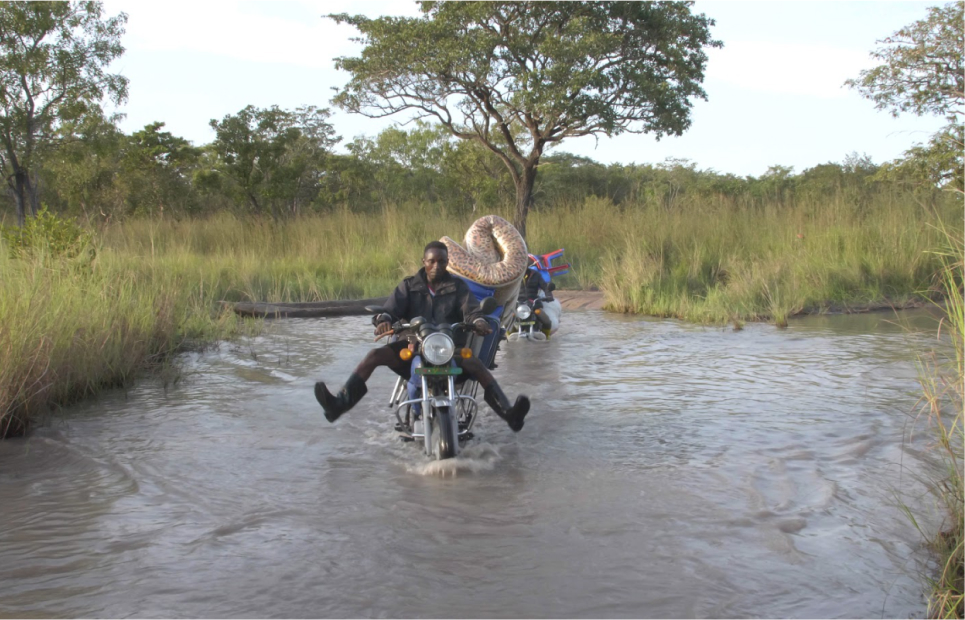
Local people are longing for development, and many are eager for industrial mining to begin anew:
Manono was a hub for tin mining in the 20th century, up until the 1990s, when the Congo wars halted production. They told us that they hoped the town’s forthcoming lithium mining — originally spearheaded by AVZ, after the company bought into a joint venture called Dathcom Mining with a Congolese state-owned company and a company owned by a Chinese national — would bring work for locals and improvements to the town, including at the hospital and schools, which are in a desperate state.
To some locals’ frustration, the operation has been bogged down by legal and political disputes that have pushed out the start date for mining again and again. Early AVZ reporting projected that lithium mining would begin in Manono by the first quarter of 2023. This start date now appears to be substantially delayed by a series of lawsuits over ownership rights and two January 2023 ministerial decrees stalling the mining exploration process.
The company suffered a further blow in April 2023, when it was suspended from trading on an exchange in Australia for not complying with disclosure rules; the Congolese Mining Ministry has also revoked AVZ’s exploration permit.
Meanwhile, the other international publicly listed company in Manono, the Canadian-, German- and U.S.-listed Tantalex Lithium Resources, announced in a June 2023 article in Mining Review Africa that it was on track to become the first lithium producer in the DRC. Tantalex owns the rights to mine 11 giant tailings piles. These mountains of earth and minerals — waste that remains once the valuable fraction of an ore is separated out, left over from tin mining decades before — sit on top of the AVZ mining area, known as a concession. Previous mining for other minerals and metals in Manono has left the landscape dotted with vast tailings mountains, which Tantalex estimates to hold some 105 million tons of lithium-containing material. The company also owns two other mining concessions, in which it has a 70% share, next door to AVZ’s mines.
Tantalex’s April 2022 newsletter breathlessly announced approved drilling along a stretch of rock on its Manono concessions where there is a high chance of lithium occurrence: “How big this could be will be anyone’s guess, but it will be big!” Regardless of either company’s eagerness to start mining and their declarations of huge potential profits, frustration is growing in Manono. “There is wealth here,” said Ben Robinson during a listener call-in program that he hosts with fellow journalists Eric Mutumbo and Esther Muntwabene at a local radio station in Manono. “But, if you look closely, you will see that it’s the foreigners, people who don’t even dig themselves, who profit from our minerals and at our expense.”
“They exploit us — we are still colonized,” Muntwabene added.
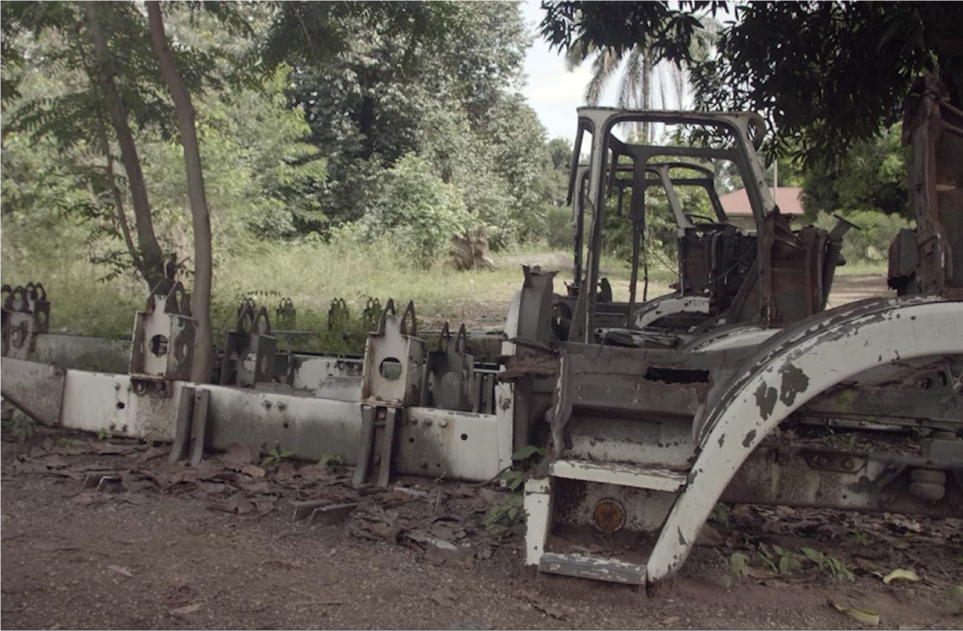
Before mining on a concession can begin in the DRC, a series of documents needs to be filed
with the Cadastre, the body that oversees mine permitting in the country. One of the newest requirements, introduced in 2018, is for mines to set out a clear and financially provisioned five-year plan for local social development — a Social Term Sheet, called a “Cahier des Charges” in French — that is created through community consultation and negotiation with key local stakeholders. This document should detail how the mine and the companies intend to interact with, and in certain instances safeguard, the local community. This often includes agreements on infrastructure projects, water-quality standards, waste storage and even things like limiting large truck traffic in a local community. While mines would previously have community development plans, they were usually created without consultations, a key element of the new regulations.
The abbe, who is one of Manono’s main community representatives, told New Lines that as of August 2023, no agreement with the communities had been signed by either of the joint ventures, or by AVZ or Tantalex, the companies which lead them. (Both companies and the Cadastre declined requests from New Lines to review the documents, assuming they existed.) Few of the community’s stakeholders have been contacted, and discussions are sparse. Despite this, both mining companies have been undertaking exploratory work at Manono for years.
The lack of communication between companies and the community became clear as we moved around Manono talking to teachers, civil society, workers, miners and government employees. Rumors of thousands of new jobs, a new hospital and roads leading to major regional hubs abounded. A T-shirt campaign started, calling for a factory to produce lithium-ion batteries in Manono — a pipe dream, industry experts told us, since for logistical and financial reasons batteries are produced in the same hubs that make electric vehicles, like South Korea and China. Nevertheless, some local politicians have seized on the idea and are exploiting it for political gain.
One civil society representative, who New Lines is not naming to protect them from reprisals, said in an interview that “we have no information” about the community consultation document. “They haven’t set out any specifications, although I read on the internet somewhere that the company intends to plant 50,000 trees.” Other projects, including a proposed railway to transport minerals out of Manono, were designed without consulting the local community, they said.
The number of direct jobs that industrial lithium mining will offer in Manono is likely to be in the hundreds, rather than the thousands that some locals have in mind. AVZ’s managing director, Nigel Ferguson, told New Lines that the company would create 300 jobs during mine construction, 150 permanent jobs thereafter and a further 200 to 300 short-term contract roles doing labor such as clearing roads. To distribute jobs, AVZ would be careful not to employ more than one person from the same family in Manono, he added.
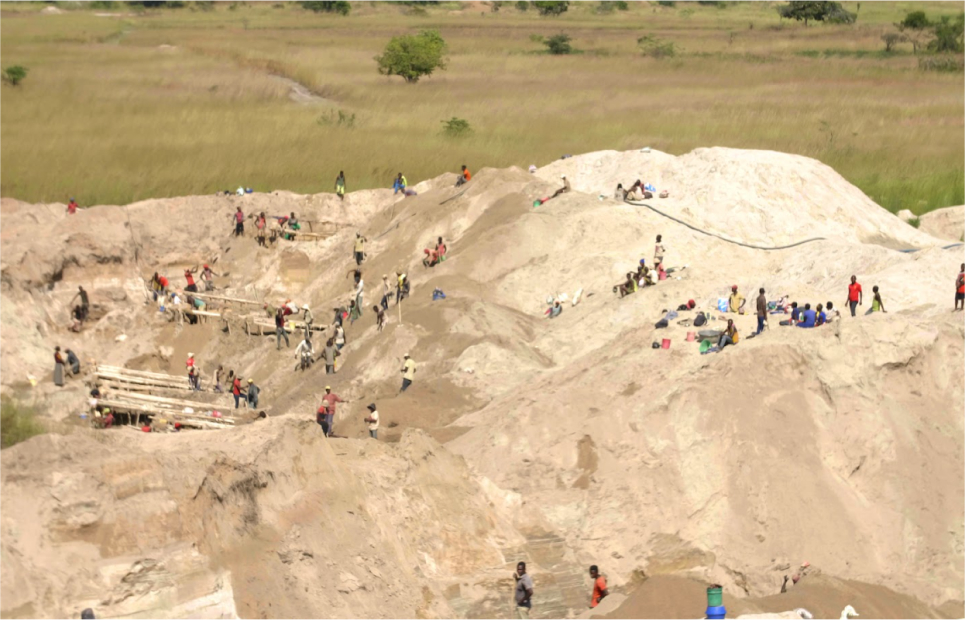
Away from the corporate boardrooms, the proposed industrial mining work is already having a significant impact on Manono’s communities’ livelihoods.
Currently, Manono’s economy is largely underpinned by artisanal miners — individuals who dig mainly for tin and tantalum using basic tools on the abandoned Belgian mining concessions that lie beneath the town. It is estimated that there are close to 10,000 artisanal miners in Manono, according to the president of the Territorial Committee of Artisanal Miners. Some of these people have already been forced to leave the areas where they dig, which are now on the mining concessions given to the industrial mining companies, and their livelihoods have been put at risk.
One young artisanal miner, not pausing his labor of panning muddy water to extract mineral-rich ore, described how he had been pushed off the concession in Manono by AVZ employees.
“They said they had bought the concession and we had to leave,” he said. Now, he said, the concession was closed off to locals, and they are unsure what is taking place on the land they once mined. “It’s a secret. The white people have their machines; they work themselves with their employees, no Blacks can get close unless you work there.”
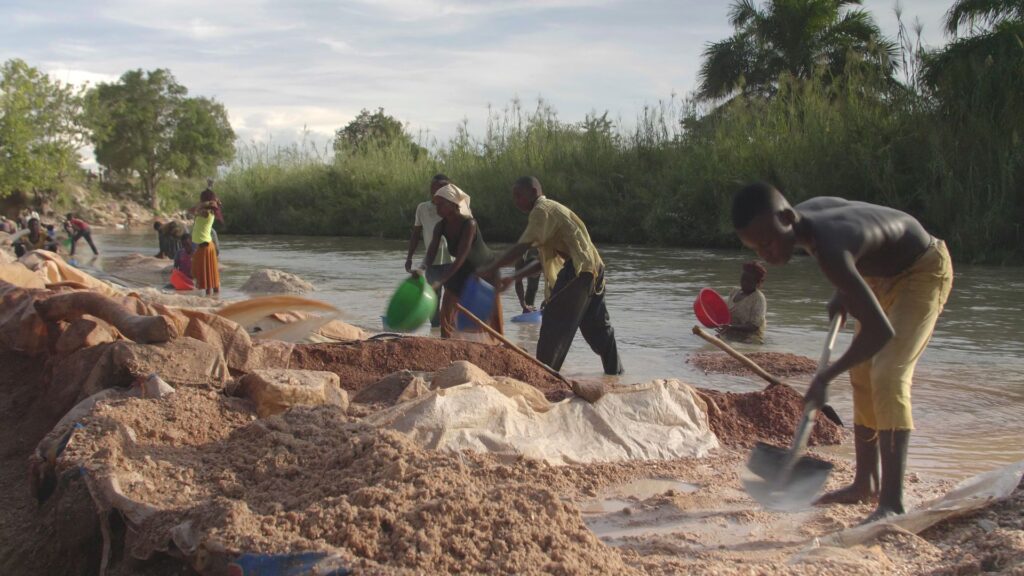
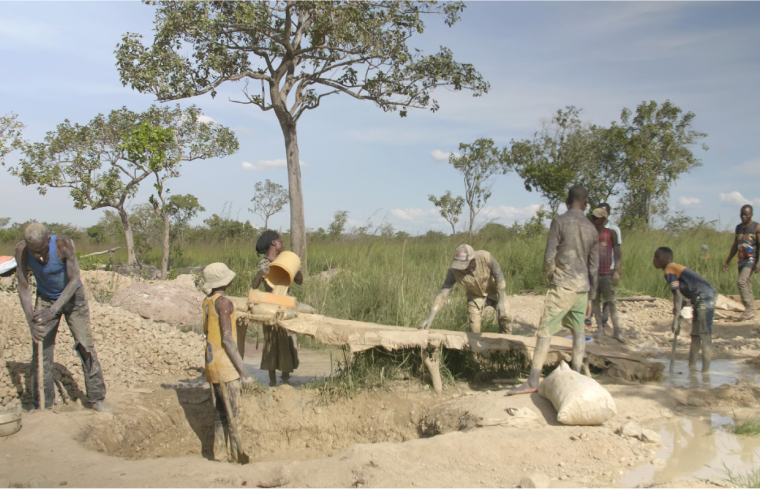
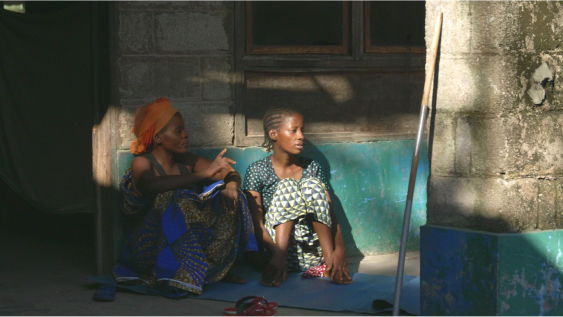
One place we did find company engagement was in the local hospital. In April 2022, we visited the ward in Manono’s former hospital that Tantalex was previously funding, according to literature on its website and the head doctor we spoke with. The doctor led us through the hospital’s main hall, where the ceiling was collapsing above the patients’ beds. At the end of the corridor, we entered what he said was the Tantalex-funded area: a small doorless room that showed signs of dampness and was furnished with an empty bookshelf, plastic table and two beds with no mosquito nets.
Since our visit, Manono has transferred its patients to a new state hospital, about 2 miles from the AVZ headquarters, where Tantalex is providing some medicine, according to a local activist and a doctor at the hospital. Tantalex CEO Eric Allard told New Lines that it had recently sponsored a team of doctors to undertake surgery at Manono’s hospital. He told us, “We do seem to share one concern about the welfare of the communities in Manono and the positive impacts on the population that may come from our projects in the area.” He added that the company supported a nongovernmental organization called Upright Africa, which confirmed that Tantalex partnered with it for two medical missions in 2022.
Activists in Manono are worried about more than jobs and infrastructure; they’re also concerned about the environmental and health effects of bringing back industrial mining to the town
In other countries where hard rock lithium deposits have been found, including recently the United States, Portugal and Serbia, environmental groups, governmental bodies and local residents have resisted lithium mining because of the potential negative impacts on the environment and the health of the communities where mining would take place.
While neither AVZ nor Tantalex nor the joint ventures to which they belong have begun the active mining process, early exploration has begun. And, local activists say, the way the companies have undertaken that work has led to doubts about the responsible practices of the companies.
New Lines sent Google Earth satellite images showing the sites of AVZ’s initial drilling program from February 2021 — when vegetation was cleared and the ground visible to satellite cameras — to Steven Emerman of Malach Consulting, a company that specializes in evaluating the environmental impacts of mining. Emerman concluded that the images appeared to show unplugged boreholes. Unplugged boreholes can lead to the contamination of waterways, groundwater and aquifers. Dr Emerman said that “unplugged boreholes are a major safety hazard for children, adults, domestic animals and wild animals.” He explained that contaminated surface water can also flow down unplugged boreholes, contaminating the groundwater.
“The failure to replug boreholes indicates a very high degree of irresponsibility. It is difficult to imagine how such irresponsible exploration could be followed by a responsible mining operation,” he said. (AVZ did not respond directly to New Lines when we asked them about the boreholes, saying, “AVZ is in full compliance with its regulatory requirements.”)
Activists also point to problems with two other key documents that are required before mining can begin and that portend problems with lithium extraction at Manono: a feasibility study and an Environmental and Social Impact Assessment.
The feasibility study evaluates the economic viability and technical feasibility of exploiting a concession; the impact assessment aims to predict the effects the mining will have on the local ecology and community at an early stage in the process, and find ways and means to mitigate those risks or problems. In many ways the two studies go hand in hand and can include information on everything from wastewater management and air pollution to the exacerbation of community tensions or the effect on the labor force.
Congolese law requires that mining companies create the impact assessment within six months of receiving an exploration permit and make a copy available to the public upon request. We found, however, that Minocom Mining, the joint venture that is majority-owned by Tantalex, had not conducted or published an impact assessment or a pre-feasibility study for a tailings concession where it says it will extract lithium — even though the initial exploitation permit for the concession was granted in 2017.
New Lines asked Tantalex about the absence of both the impact assessment and feasibility studies, and requested copies of each. Allard, the CEO, told New Lines in an email that the permit where the tailings are located was “under renewal” and did not comment specifically on the prior existence or publication of the impact assessment. In the June 2023 Mining Weekly piece in which Tantalex claimed to be leading the race to produce lithium in the DRC, the company commented that work on the pre-feasibility study and impact assessment had begun.
According to a sustainability specialist who requested anonymity, in the absence of an Environmental and Social Impact Assessment it is almost impossible for the local community to properly and realistically assess the risks and potential impacts of the mining project and whether these will be properly handled by the company. It is also difficult to understand the environmental risks and measures put in place by the company. According to the specialist, the short distances between the mine and the homes of local residents, among other issues, should be addressed in a publicly available document: The current lack of transparency leaves the community in the dark about what lies ahead.
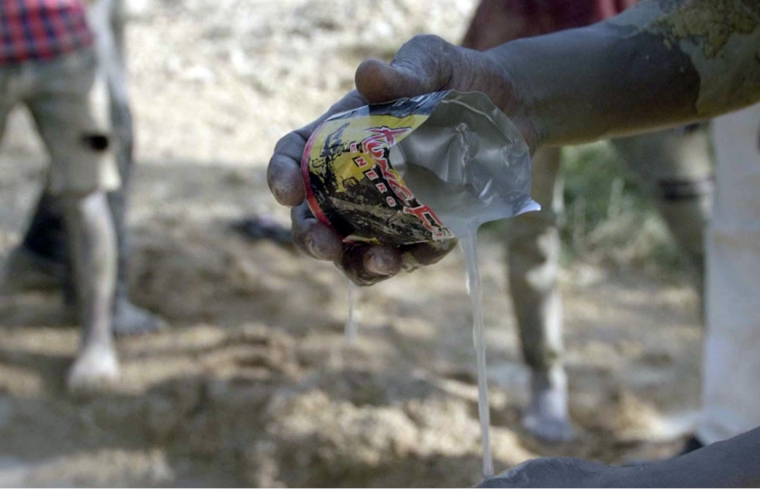
Meanwhile, AVZ’s feasibility study to mine in Manono has left many on the ground with questions. Information about many key components of the project, the inclusion of which is considered industry standard in a feasibility study, was missing.
AVZ’s feasibility study does not include information on the likelihood of acid mine drainage — the runoff created when water and rocks react with air to form sulfuric acid, which can pollute ground and surface water — or how the company would monitor or protect the community and its water supply. Nor does it contain information about an Emergency Preparedness and Response Plan in the event of a collapse of the proposed tailings dam — the disposal site of the slurry of water and leftover minerals after the lithium is extracted — which the Environmental Law Alliance Guidebook points out is necessary for proper treatment of risks and hazards and their impacts on ecosystems, human health and safety. Tailings dams are notorious for leaking, leaching and, in some instances, collapsing, sending hundreds of thousands of gallons of mining sludge into communities.
The feasibility study does, however, include a map of the company’s planned waste dump, a mile-long mountain of topsoil and other nonvaluable waste materials that can also threaten the security and health of nearby communities. Its proposed location overlaps with existing housing areas and appears to cover the same area that locals told us was the location of the only spring in Manono.
When we shared AVZ’s definitive feasibility study with Emerman, the mining consultant, he said, “there’s really nothing here. It reads like something that was written in great haste by someone that had no idea what they were doing. It reads like something that was written by the laziest student in the class, who started his or her course project the night before it was due, and who is just hoping to somehow pull a passing grade out of the class. Is this really all that would be required by Congolese law? Is this all that would be required by the Australian Securities Exchange?”
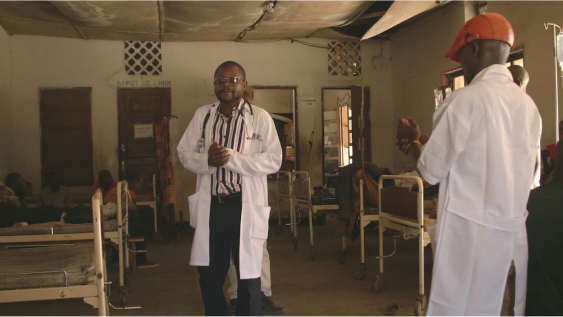
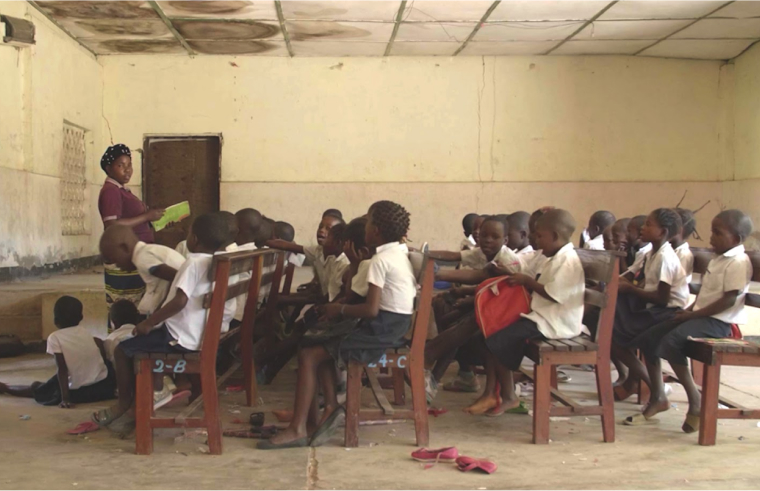
We put New Lines’ findings to AVZ, who did not reply to the specific questions and said, “AVZ is in full compliance with its regulatory requirements.” In a 2021 interview CEO Nigel Ferguson told New Lines the company’s activities would have “no negative impact on the local environment’s water sources.” Jean Felix Mupande, until August 2023 the director of the Congolese Mining Cadastre, which reviews all impact assessments before concessions are granted, told New Lines in an email that the AVZ joint venture, Dathcom, had submitted an impact assessment to the Cadastre but that the Cadastre was bound by confidentiality under the Congolese Mining Code and could not share a copy, despite Congolese law requiring public access to at least a summary of its findings.
Almost one year on from our visit, civil society remains concerned about these issues.
According to Lazare Mwilambwe, a Kalemie-based human rights activist, this information is imperative. “AVZ and extractive companies are obliged by the DRC’s Workers Code to not only look after the health and well-being of their employees, but also to respond to the social needs of the community via a community consultation document,” he said.
AVZ told New Lines that “AVZ has consulted widely with the local Manono community to understand what its requirements are.” AVZ and representatives of its joint venture company Dathcom claim to be actively engaging with the community about the impacts of mining on the town, including by holding meetings, according to the company’s feasibility study. Videos circulating on social media show two such community meetings in 2022 and at least one more in January 2023. But the company press releases, feasibility study and company reports are not translated from English into French, Congo’s official language, nor the languages used in Manono city such as Kiluba or Kiswahili. Cominiere, the state-owned company that is part of the other side of the Dathcom joint venture, does not appear to have held any community meetings. It has only recently published its lithium mining contracts on its website.
Back in the dimly lit radio booth,
the hosts of Manono’s radio program tapped into the ambivalence their community was feeling around the proposed megamine.
“We, the inhabitants of Manono, we don’t know the consequences of this exploitation,” Eric Mutombo said, airing his concerns about the lack of transparency around the project. “Maybe it will pollute the water. It could kill someone. In short, it will destroy our environment. We will undoubtedly be victims of the destruction of our environment.”
In May 2021, on a visit to the Congolese mining city Kolwiezi, Congolese President Felix Tshisekedi declared that he would renegotiate the country’s mining contracts. Tshisekedi said, “It is not normal that those with whom the country has signed exploitation contracts get rich while our people remain poor.” He continued: “I’m very tough on these investors who come to enrich themselves. They come with empty pockets and leave as billionaires.”
Despite Tshisekedi’s frustration and soaring global demand for lithium, life around Congo’s largest lithium deposit continues largely unchanged. Work remains scarce, infrastructure poor, and education, healthcare and nutrition wanting. Indeed, Manono’s population may even suffer negative environmental impacts fueled by the green transition’s demand for lithium. Yet the community still holds out hope for a just future.
“We just want a good investor,” said radio presenter Ben Robinson as his co-hosts nodded along in front of their mics. “Let them come and build us good schools, hospitals, roads and drinking water taps. It is their duty and also our right because they must not enrich themselves with our wealth and leave us no memory. … This lithium mining must be able to concretely benefit the Indigenous population first.”
This article was published in the Winter 2024 issue of New Lines’ print edition.
All photos and videos are by Jack Wolf.
Research for this piece was supported by the Journalism Fund Europe, Netzwerk Recherche and the nonprofit environmental organization Olin gGmbH.




